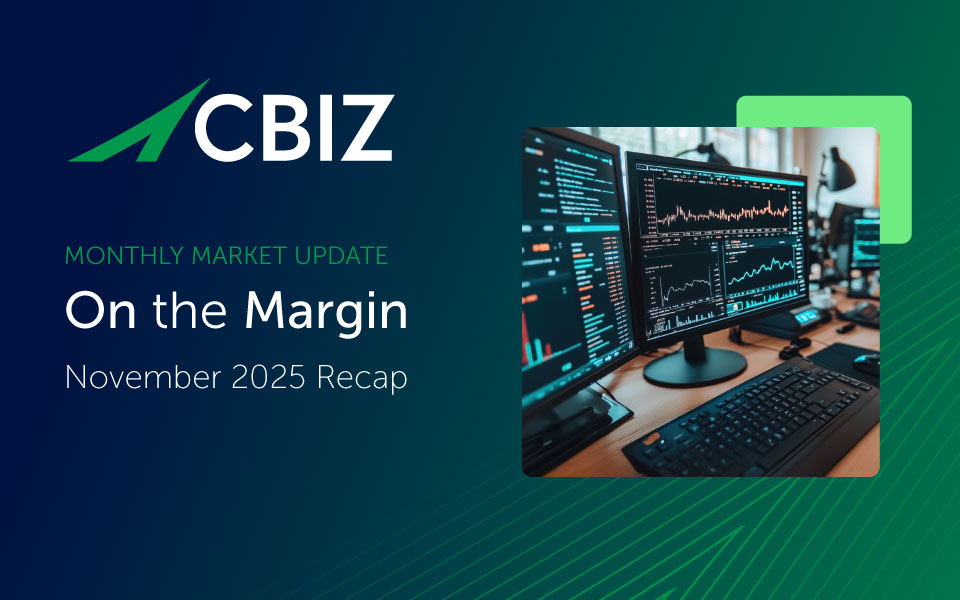Construction business owners must make critical decisions about their company’s future leadership. Succession planning plays an important role in shaping the future of their business and protecting their legacy. Increasingly, employee stock ownership plans (ESOP) provide an attractive alternative to selling the business to a third party.
An ESOP provides an avenue for selling the company to employees through an ESOP trust. This article assesses the profile of a strong ESOP candidate in the construction industry, which includes an evaluation of the company’s size, capitalization and free cash flow. Construction company owners and their leadership teams should also examine the availability of external financing, the company’s culture and the goals of selling shareholders.
Ideal ESOP Size for Construction Firms
While there are no strict size requirements to become an ESOP, strong candidates typically have a minimum of 60–100 employees but can be smaller in the right circumstances. Companies beneath this threshold may become overly burdened by administrative costs and challenges. In addition, the IRS has stringent “anti-abuse” tests for ESOP plans that must be met for a plan to qualify. These rules ensure value is allocated fairly across a pool of potential ESOP participants. Passing these tests is more difficult if a construction company has fewer employees.
Capital Considerations in ESOP Planning
Selling shareholders are paid for their shares by leveraging the company during the ESOP formation. These shares can be paid for using company cash, external lending, a note to the seller or a combination of these three options. A company’s ability to secure debt financing is essential when assessing its ESOP candidacy. A high level of leverage on a balance sheet could preclude an ESOP from being formed. A highly capitalized construction company is a stronger ESOP candidate because of greater access to external financing.
For contractors who require bonding, planning is needed relative to the financing structure of a leverage ESOP transaction. This requires proactive communication and approval with your surety. Sureties that have experience with ESOP companies will work through a leverage ESOP structure to maintain bonding needs.
Free Cash Flow Needed for ESOP Consideration
Companies looking to instigate an ESOP should have a minimum consistent free cash flow for the reasons below:
- Free cash flow is the earnings stream available to make interest payments. Naturally, debt lenders are attracted to companies with historically strong and stable free cash flow as these companies are better suited to make timely interest payments. With better access to debt financing, companies with strong free cash flow are also strong ESOP candidates.
- If an ESOP owns 50% of an S corporation, no tax is due on that 50% of the company’s income; if the ESOP owns 100%, there is no tax at all (at the federal and, usually, the state level as well).
- Due to the nature of the leverage required to initiate an ESOP, a company with reasonably consistent cash flows is ideal. Volatile cash flows are a concern when making consistent payments to seller or bank financing.
- Due to the cyclicality and risks inherent in the construction industry, lending institutions seek out companies with diversified cash flow streams.
Construction Firm Culture and Legacy
The success of an employee-owned business requires an employee-owned mentality from its owners and employees. Companies with solid management and a committed workforce are likely to carry this mentality or be able to adopt it, making them strong ESOP candidates quickly. Quantitatively assessing “strong management” and “a committed workforce” is difficult, but factors worth considering include management’s industry experience and tenure, employee morale and workforce retention rates.
Selling shareholders must also consider their company’s culture as it pertains to the lasting legacy of their business. Many businesses bear the name of their founder(s). An attractive feature of business ownership is the ability to strengthen and uphold the company name through business stewardship in the community. When a business is sold to an external buyer, business owners and their descendants may lose names, branding, trademarks and reputation. An ESOP rewards selling shareholders who have built a reputable company by providing heightened assurance that the company name and legacy will be preserved favorably.
Excellent ESOP candidates retain a culture of training, employee involvement and a sense of community. Given that employees are the beneficiaries of a company’s growth under an employee ownership structure, it is prudent to identify (1) companies with a solid existing culture and (2) selling shareholders wanting to preserve it.
Financial Goals of Selling Shareholders
The selling shareholders must balance the goals of wealth maximization with the desire to preserve the business’s legacy. Trusted advisors play a critical role in this process by helping these shareholders navigate the menu of options before them.
Along with the considerations above, the financial goals of a selling shareholder are vitally important when assessing a company’s ESOP candidacy. How a selling shareholder perceives value is an important consideration. ESOPs are qualified retirement plans governed by the Employee Retirement Income Security Act (ERISA). ERISA requires employee stock ownership plans to pay no more than “adequate consideration,” or fair market value, as reasonably determined by a trustee of an employee stock ownership trust, when investing in employer securities. The U.S. Department of Labor defines fair market value as:
“the price at which an asset would change hands between a willing buyer and a willing seller, when the former is not under any compulsion to buy and the latter is not under any compulsion to sell and both parties are able, as well as willing, to trade and are well informed about the asset and the market for such asset.”
Fair market value may be lower than the value of a business to a strategic or financial buyer. Advisors must understand these value standards and clearly communicate them to selling shareholders. In addition, selling shareholders must know all financial aspects of a transaction, including the tax benefits to both the company and the sellers.
Consideration of ESOPS for Contractors
Construction business owners should consider an ESOP when evaluating all exit options for their company. If the requirements discussed above are met and the company passes IRS testing limits, the benefits of an ESOP-owned company are unparalleled:
- Selling shareholders can preserve their legacy and culture;
- Business leaders can use an ESOP as a tool for cultivating strong employee retention while attracting new employees;
- Create employee ownership mentality companywide;
- The ESOP transaction structure can create substantial tax benefits for both the company and the selling shareholders including unique situations with an S-corporation vs C-corporation and potential conversion strategies; and
- Selling shareholders can expect to receive a fair market sale of their business, all while rewarding next-generation management with stock incentive plans.
An ESOP may not be suitable for all contractors. Business leaders should conduct a thorough review of all facts and circumstances. The abovementioned requirements are not hard rules but general guidelines for ESOP candidacy. Selling shareholders should understand and review(1) the valuation of their business, (2) the feasibility of an ESOP transaction from a cash flow perspective and (3) stringent IRS testing requirements and criteria that need to be passed initially and ongoing. These items are beyond the scope of this discussion. CBIZ Advisory can provide services that will help selling shareholders in the above considerations.
Conclusion
Succession planning is not a one-size-fits-all endeavor. Construction business owners and their trusted advisors need to understand all their options as they plan for the next chapter of the business. When a company fits the criteria above, business owners and their advisors should ask themselves if an ESOP is the right path.
To learn more about ESOPS for construction firms, connect with our professionals.
© Copyright CBIZ, Inc. All rights reserved. Use of the material contained herein without the express written consent of the firms is prohibited by law. This publication is distributed with the understanding that CBIZ is not rendering legal, accounting or other professional advice. The reader is advised to contact a tax professional prior to taking any action based upon this information. CBIZ assumes no liability whatsoever in connection with the use of this information and assumes no obligation to inform the reader of any changes in tax laws or other factors that could affect the information contained herein. Material contained in this publication is informational and promotional in nature and not intended to be specific financial, tax or consulting advice. Readers are advised to seek professional consultation regarding circumstances affecting their organization.
“CBIZ” is the brand name under which CBIZ CPAs P.C. and CBIZ, Inc. and its subsidiaries, including CBIZ Advisors, LLC, provide professional services. CBIZ CPAs P.C. and CBIZ, Inc. (and its subsidiaries) practice as an alternative practice structure in accordance with the AICPA Code of Professional Conduct and applicable law, regulations, and professional standards. CBIZ CPAs P.C. is a licensed independent CPA firm that provides attest services to its clients. CBIZ, Inc. and its subsidiary entities provide tax, advisory, and consulting services to their clients. CBIZ, Inc. and its subsidiary entities are not licensed CPA firms and, therefore, cannot provide attest services.















